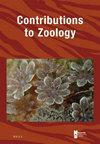Taxonomy, ecology and distribution of the mosquitoes (Diptera: Culicidae) of the Dutch Leeward Islands, with a key to the adults and fourth instar larvae
IF 2.2
2区 生物学
Q1 ZOOLOGY
引用次数: 1
Abstract
Assessing mosquito biodiversity is important for disease surveillance and ecosystem health assessments. Such studies are particularly needed in regions like the Caribbean, which have experienced a series of recent mosquito borne disease outbreaks but received little attention regarding its invertebrate biodiversity. Here, we report on results from a mosquito survey on the Dutch Leeward Islands (Sint Eustatius, Sint Maarten and Saba), carried out in April and October 2018, which is the first integrative survey since those conducted by Van der Kuyp (1947) and Wagenaar Hummelinck (1949). Moreover, we present a novel key for adults and fourth instar larvae of the mosquitoes of the Dutch Leeward Islands. Overall, eleven species were recorded, eight on Sint Maarten, five on Saba and two on Sint Eustatius. Two new potential disease vectors, Culex nigripalpus and Aedes taeniorhynchus, were recorded on Sint Maarten. One previously recorded species, Cx. habilitator, was not retrieved from any of the islands, which is further discussed in the paper. Species indicative of natural forest which previously occurred on all three islands were absent from Sint Eustatius and Sint Maarten but still present on Saba. In contrast, species indicative of human inhabitation, Ae. aegypti and Cx. quinquefasciatus, were highly abundant on Sint Maarten and Sint Eustatius and present in low numbers on Saba. Overall, the results of this study emphasize the importance of biodiversity surveys and indicate that frequent mosquito inventories may contribute to a better understanding of mosquito community composition and distribution of potential vector species.荷兰背风群岛蚊虫的分类、生态学和分布(直翅目:蚊科),以成虫和四龄幼虫为重点
评估蚊子的生物多样性对于疾病监测和生态系统健康评估非常重要。在加勒比等地区尤其需要进行此类研究,这些地区最近经历了一系列蚊子传播的疾病爆发,但其无脊椎动物生物多样性却很少受到关注。在这里,我们报告了2018年4月和10月在荷兰背风群岛(圣尤斯特歇斯岛、圣马丁岛和萨巴岛)进行的蚊子调查的结果,这是自范德库普(1947)和瓦格纳尔·胡默林克(1949)进行的调查以来的首次综合调查。此外,我们还为荷属背风群岛的成虫和四龄幼虫提供了一个新的钥匙。总共记录了11个物种,其中8个在圣马丁岛,5个在萨巴岛,2个在圣尤斯特歇斯岛。在圣马丁岛记录到两种新的潜在病媒,黑库蚊和带喙伊蚊。一个先前记录的物种,Cx.habilitator,没有从任何一个岛屿上找到,这将在论文中进一步讨论。圣尤斯特歇斯岛和圣马丁岛都没有以前出现过的天然森林物种,但萨巴岛上仍然存在。相反,表明人类居住的物种埃及伊蚊和致倦库蚊在圣马丁岛和圣尤斯特歇斯岛上数量非常丰富,在萨巴岛上数量很少。总的来说,这项研究的结果强调了生物多样性调查的重要性,并表明频繁的蚊子盘点可能有助于更好地了解蚊子群落的组成和潜在媒介物种的分布。
本文章由计算机程序翻译,如有差异,请以英文原文为准。
求助全文
约1分钟内获得全文
求助全文
来源期刊

Contributions to Zoology
生物-动物学
CiteScore
4.00
自引率
4.50%
发文量
16
审稿时长
>12 weeks
期刊介绍:
Contributions to Zoology solicits high-quality papers in all systematics-related branches of comparative zoology (including paleozoology). Preference will be given to manuscripts dealing with conceptual issues and to integrative papers (e.g., ecology and biodiversity, morphology and phylogeny and character state evolution, phylogeny and historical biogeography, systematics and bioinformatics, bioinformatics and biodiversity, habitat disturbance and biogeography, etc.). Reviews and alpha-taxonomic contributions are considered for publication, but acceptance will depend on their high quality and exceptional nature.
 求助内容:
求助内容: 应助结果提醒方式:
应助结果提醒方式:


